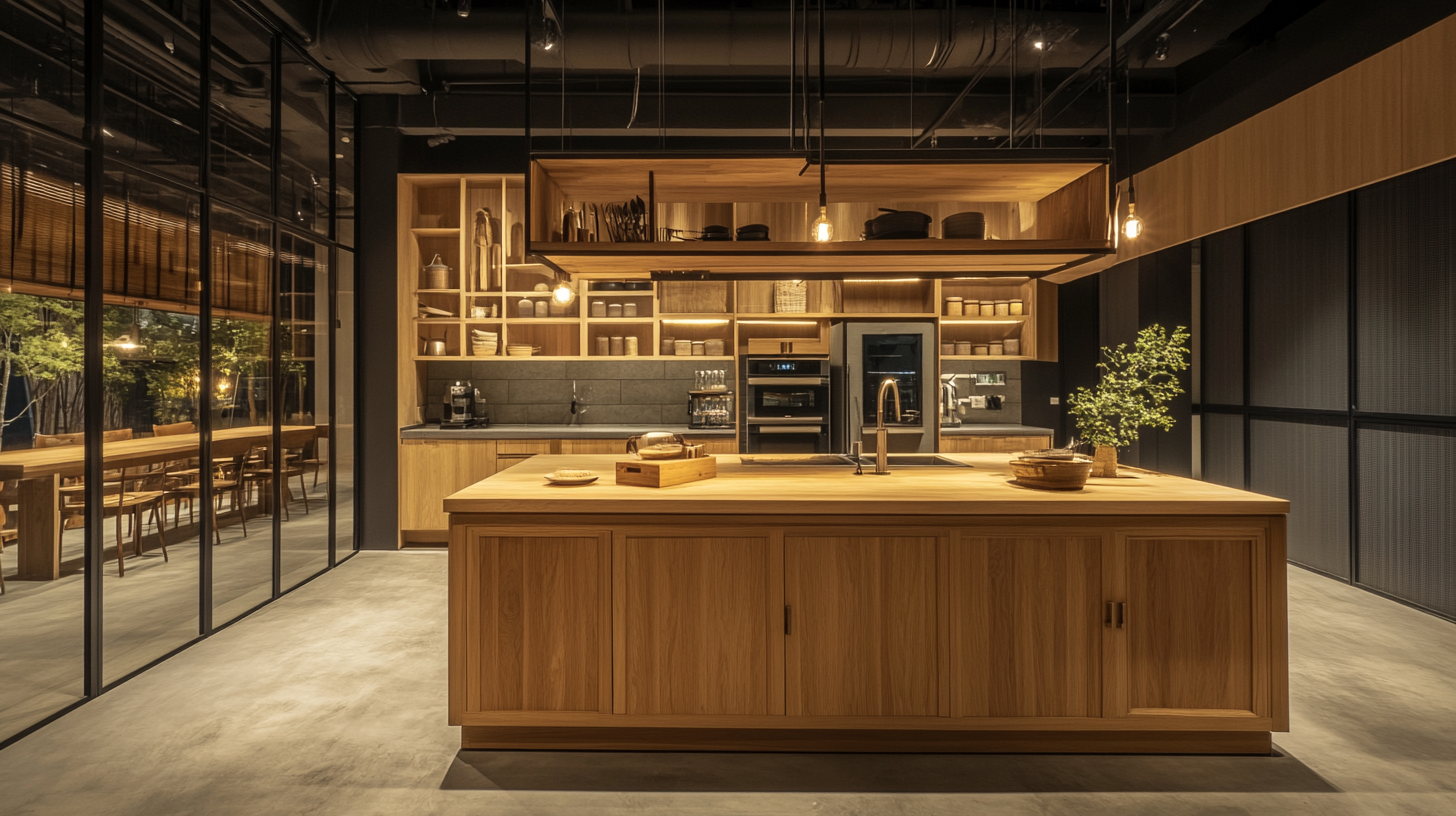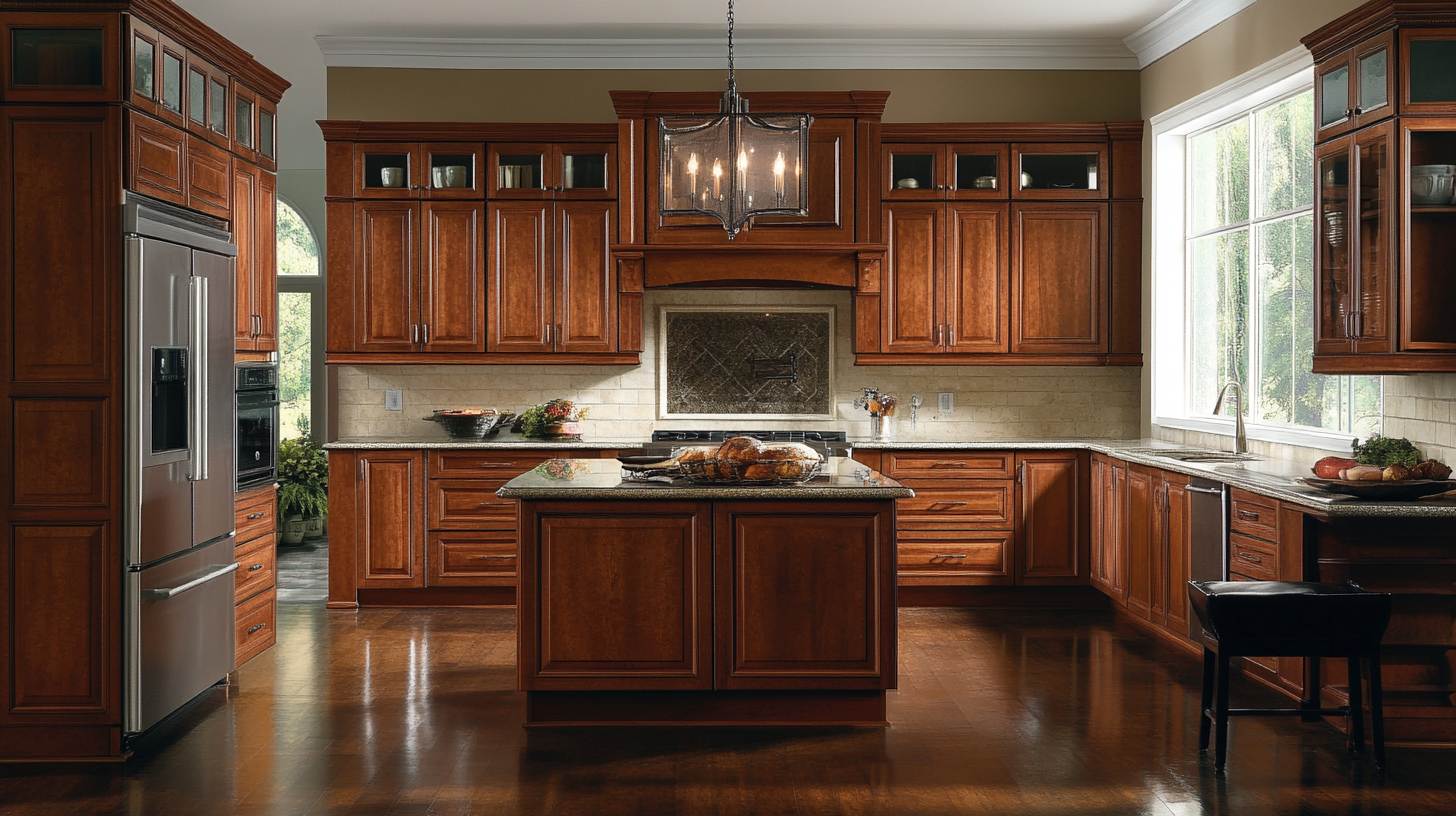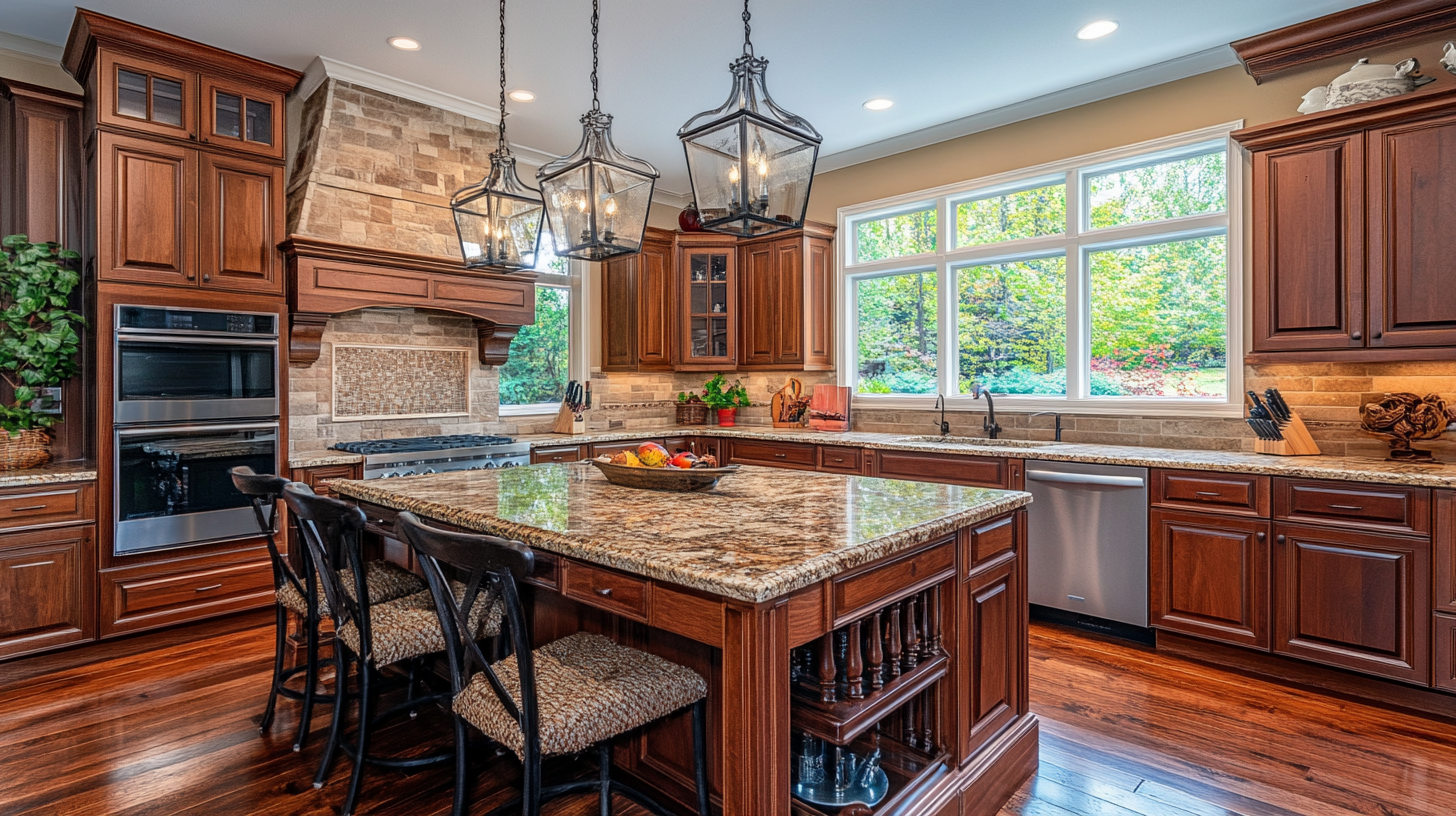China's Resilient Growth in Oak Kitchen Cabinets Amidst Tariff Challenges
In recent years, the global trade landscape has been significantly affected by escalating tariffs and trade tensions, particularly between China and the United States. Despite these challenges, the Chinese manufacturing sector, specifically in the production of Oak Kitchen Cabinets, has shown remarkable resilience and growth. According to a report by Grand View Research, the global kitchen cabinets market size is expected to reach USD 157.9 billion by 2025, with oak cabinets maintaining a strong position due to their durability and aesthetic appeal. In light of the imposed tariffs that have impacted numerous industries, manufacturers in China have strategically adapted their operations, focusing on enhancing efficiency and quality. This adaptability not only allows them to maintain competitiveness but also positions them to capitalize on evolving consumer preferences in the cabinetry market. As such, China's ability to thrive in the face of adversity highlights its pivotal role in the global oak kitchen cabinet industry, illustrating a compelling narrative of innovation and endurance.

China's Response to Tariff Pressures in the Oak Kitchen Cabinet Market
China's oak kitchen cabinet industry has shown remarkable resilience in the face of tariff challenges, adapting strategically to maintain its competitive edge in global markets. A recent report by MarketsandMarkets indicates that the oak kitchen cabinet market is projected to grow at a CAGR of 4.5%, despite the pressures imposed by tariffs on exports to key markets like the United States. This growth is largely attributed to China's innovative manufacturing techniques and a focus on quality that meets international standards.
To counteract the negative impacts of tariffs, Chinese manufacturers have enhanced their supply chain efficiencies, resulting in cost savings that can be passed on to consumers. According to the China Furniture Association, nearly 60% of companies in the sector have shifted focus toward diversifying their export markets, reducing dependency on North America while exploring opportunities in Southeast Asia and Europe. Furthermore, China has invested heavily in research and development, allowing for the introduction of new designs and eco-friendly materials that appeal to a broader customer base, thereby ensuring sustained demand for oak kitchen cabinets in a competitive landscape.

Innovative Strategies Employed by Chinese Manufacturers
In the face of ongoing tariff challenges, Chinese manufacturers of oak kitchen cabinets have showcased remarkable innovation and adaptability. By leveraging advanced technology and streamlined production processes, these manufacturers have not only maintained their competitive edge but also improved the quality of their products. Many have adopted automation and artificial intelligence to enhance efficiency, allowing them to produce high-quality cabinets at scale while minimizing costs.
Moreover, Chinese manufacturers are increasingly focusing on sustainability and eco-friendly practices. They are sourcing materials responsibly, utilizing water-based finishes, and implementing waste reduction strategies. This commitment to sustainability resonates with global consumers, who are more inclined to support environmentally conscious brands. By aligning their production methods with international standards and consumer preferences, these manufacturers are successfully navigating the complexities of the global market, ensuring their resilience in an evolving economic landscape.

Consumer Trends Shaping the Demand for Oak Kitchen Cabinets
As consumer preferences shift, the demand for oak kitchen cabinets continues to rise, highlighted by the recent industry reports. Homeowners are increasingly valuing durable and aesthetically pleasing choices, making oak a top contender for kitchen designs. The appeal of oak cabinets lies in their timeless look and the versatile warmth they bring to any interior space. Furthermore, the rising need for sustainable materials positions oak as a favored option among eco-conscious consumers.
For those looking to upgrade their kitchens, consider these tips: First, opt for finishes that enhance the natural grain of the oak, allowing for a organic aesthetic that complements various styles. Secondly, mixing oak cabinetry with modern hardware can create a striking juxtaposition that elevates the overall design. Lastly, don't shy away from bold colors in surrounding decor; they can create a beautiful contrast with the natural tones of oak cabinets, adding a contemporary flair to your kitchen space.
As we look towards the future, it's evident that oak kitchen cabinets will remain influential in home decor trends. With their resilience against tariff challenges and the evolving consumer preferences shaping demand, oak cabinets are set for ongoing success in the market.
China's Resilient Growth in Oak Kitchen Cabinets Amidst Tariff Challenges - Consumer Trends Shaping the Demand for Oak Kitchen Cabinets
| Year | Market Size (in Millions) | Growth Rate (%) | Tariff Impact (Scale 1-10) | Main Consumer Trend |
|---|---|---|---|---|
| 2020 | 350 | 5.0 | 8 | Eco-friendly materials |
| 2021 | 370 | 5.7 | 7 | Smart kitchen technology |
| 2022 | 410 | 6.0 | 6 | Customization preference |
| 2023 | 450 | 9.8 | 5 | Sustainable design |
The Role of E-commerce in Boosting Sales amidst Tariff Challenges
In recent years, the oak kitchen cabinet industry in China has demonstrated remarkable resilience, particularly in the face of tariff challenges. As these tariffs have increased costs for manufacturers, e-commerce has emerged as a vital tool in boosting sales and expanding market reach. According to a report from Statista, online furniture sales in China are projected to reach $37 billion by 2025, highlighting how e-commerce platforms can counterbalance the impacts of tariffs by offering consumers greater accessibility and convenience.
One effective strategy for businesses in this sector is to enhance their online presence by leveraging social media marketing and targeted advertising. Engaging content and eye-catching visuals can significantly improve customer engagement and drive sales. Additionally, utilizing data analytics tools to understand consumer behavior can help brands tailor their offerings to meet specific needs and preferences, thereby increasing conversion rates.
**Tip**: Ensure that your product listings are optimized for search engines. High-quality images and detailed descriptions not only attract customers but also improve your chances of appearing in relevant online searches. Understanding the importance of user reviews and customer feedback can guide continuous improvements in product offerings and service quality.
Distribution of E-commerce Sales Channels for Oak Kitchen Cabinets
This pie chart illustrates the distribution of sales channels for oak kitchen cabinets in China, showcasing the increasing role of e-commerce in driving sales amidst tariff challenges.
Comparative Analysis: Growth of Oak Kitchen Cabinets in China vs. the U.S. Market
The oak kitchen cabinet market in China has shown remarkable resilience, especially against the backdrop of tariff challenges. A comparative analysis highlights that while the U.S. market is grappling with increasing costs due to tariffs, China's production capabilities and robust supply chains have positioned it favorably. This dynamic has enabled Chinese manufacturers to maintain competitive pricing and attract both domestic and international buyers.
Furthermore, the growth trajectory of the oak kitchen cabinet sector in China is supported by a broader trend in the wooden furniture market, valued at approximately USD 592.9 billion in 2024. Projections indicate a steady increase in this market, with expectations of reaching nearly USD 990 billion by 2034. The increasing demand for durable and aesthetically pleasing home furnishings directly fuels the oak cabinet segment, reflecting a shift towards quality and style in home decor. This momentum positions China not only as a major player in wooden furniture production but also as a potential leader in innovative designs and sustainable practices, setting the stage for long-term growth in the industry.
Comparative Analysis: Growth of Oak Kitchen Cabinets in China vs. the U.S. Market
This chart illustrates the growth of oak kitchen cabinets in China compared to the U.S. from 2018 to 2022. China's growth rate shows a consistent upward trend, reflecting the strong demand and resilience in the face of tariff challenges, while the U.S. market displays a more stagnant growth pattern.

